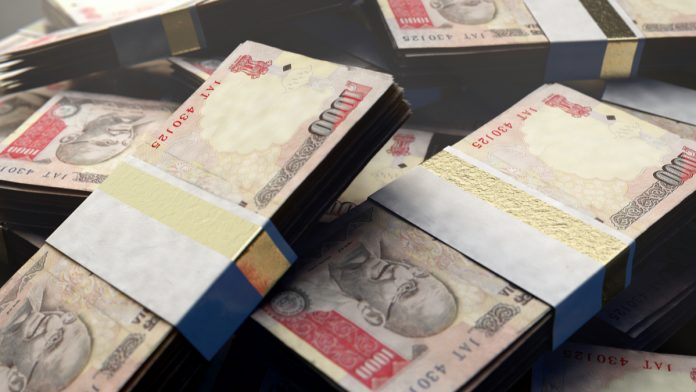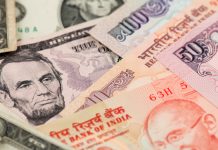- Indian Rupee (INR) falls after 2 days of gains
- RBI foreign exchange reserves fall sharply
- US Dollar (USD) rises after hot PPI
- Consumer confidence rises by less than expected
The US Dollar Indian Rupee (USD/INR) exchange rate is rising after two days of losses. The pair fell -0.06% in the previous session, settling on Thursday at 82.98. At 14:00 UTC, USD/INR trades +0.06% at 83.02 and trades in a range of 82.98 to 83.07.
The Indian rupee Is edging lower after data from the Reserve Bank of India showed that India’s foreign exchange reserve snapped a 2-week gaining streak and fell to $617.23 billion as of February 9th.
Reserves fell by $5.27 billion across the week, marking the steepest fall in a month after having risen by $6.36 billion in the prior two weeks.
Changes to foreign currency assets can be caused by the reserve bank of India’s intervention in the far forex markets to stabilise the Rupee, as well as due to appreciation of the creation of foreign assets held in the reserve.
The US Dollar is rising across the board. The US Dollar Index, which measures the greenback versus a basket of major currencies, trades at +0.22% at the time of writing at 104.50, after two days of losses.
The US dollar is pushing higher after hotter-than-expected US wholesale inflation data, which highlights the sticky nature of inflation.
The producer price index, which measures inflation at the factory gate level, increased 0.3% month on month in December and 0.9% year on year.
Meanwhile, core PPI, which excludes volatile food and energy, rises 0.5% month on month and 2% year on year.
PPI is often considered a lead indicator for consumer price prices, and rising PPI doesn’t bode well for continued cooling in consumer prices. The data comes after the CPI in January, which was hotter than expected. Together, these data points reaffirm the view that the Federal Reserve will hold off from cutting interest rates until federal officials are convinced that inflation is sufficiently under control.
The market now is not expecting the Fed to cut interest rates in March and is pricing in just a 33% probability of a rate cut in May.
Separately, data also showed that consumer sentiment in The US came in below forecast. The Michigan consumer sentiment increased to 79.6 in February, up from 79 in January but below the 80 level that was expected.





